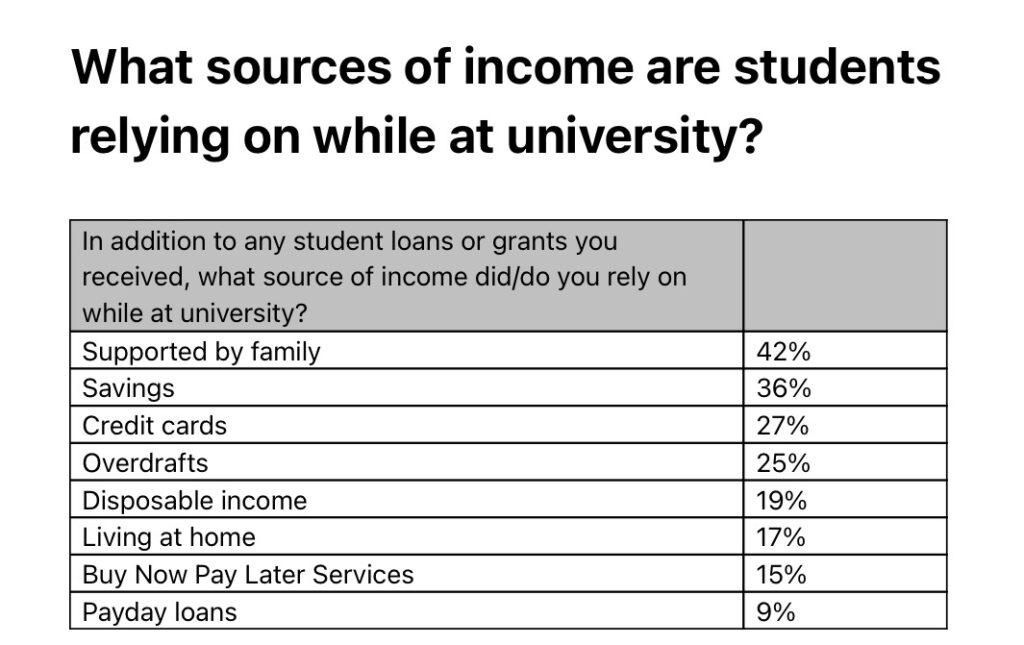Students in financial crisis as 41% consider dropping out

New research from credit management company Lowell, has discovered that over three-quarters of students (77%) develop personal debt problems while at university. But, are students educated on the potential consequences of short-term borrowing?
In the UK, the average annual percentage rate (APR) on a payday loan (a short-term loan) could be up to 1,500% – compared to a typical 23% APR on a credit card. With almost one in ten students relying on payday loans, Lowell took a deep dive into how students are funding their university experience their attitudes towards money at university, and how it might impact them.
Research has also found that 76% of students worry about making ends meet, and that 41% of students had considered dropping out of university at some point due to money worries. [2]
Students are relying on credit to fund their education experience
According to the research, the types of debt students get into consists of credit cards (27%), overdrafts (25%), Buy Now Pay Later schemes (15%), and payday loans (9%).
A payday loan is usually a short-term loan for small amounts of money with an extremely high APR. For example, if you borrowed £100 with a 50% APR and agreed to repay it back in a month, you’d owe £150 at the end of the month – an extra £50 on top of your original loan.
Having high interest and APR rates like this can have a huge impact on student finances, especially if students taking these loans out are relying on student loans and grant payments to pay them off. Loans and grants are usually only paid three times a year – not monthly – so students could end up borrowing more than they’re able to pay back in a short time frame, which could potentially lead to further ongoing problems with debt.
With 15% of students also relying on Buy Now Pay Later, Lowell wanted to shed light on this payment method. BNPL can help spread the cost of shopping, sometimes interest-free. If managed correctly, it can offer a helpful way to make bigger purchases and manage incomings and outgoings.
However, while Buy Now Pay Later products might seem like a solution for students, it can leave you at risk of being charged if you’re unable to pay. Similar to any form of borrowing, you need to understand the terms and conditions that you’re agreeing to when you make a purchase with Buy Now Pay Later products.
A recent annual survey by Save the Student also found that 32% of students said they use their overdraft as a source of income, but it is worth noting that student accounts credit limits increase year on year, and with a 0% overdraft, many students are enticed by what can feel like “free” money. However, after university, many banks will expect students to pay back their overdraft within 1-3 years, putting even more pressure on graduates to find a job in a competitive job market.
Students are also found to rely on their families’ support (42%) and savings (36%).
Student spending habits and debt
In a similar way to most Brits, student’s spending habits prioritise weekly food shops (56%), rent (52%) and bills (44%).
Despite the squeeze on finances, over a third of students (34%) were still likely to spend their money on nights out, takeaways, or going out to eat.
The average amount of debt, excluding tuition fees and student loans, that each graduate ended university with was £2,332, taking an average of 3.8 years to pay back in full.
15% of graduates ended university with over £5,000 of additional borrowing. Also, from all the people we surveyed, it took 16% of students four or more years to pay off the personal debt they accumulated while at university.
John Pears, CEO at Lowell, commented on the findings, saying:
“University should be an exciting and rewarding experience, but for those young people who move away from home and can’t depend on money from their family, it can also be a costly one.
“Getting into debt while at university can be a worrying, especially if you don’t have a regular source of income or a job secured for when you graduate. We want students to know that they are not alone when it comes to struggling with debt while at university.




